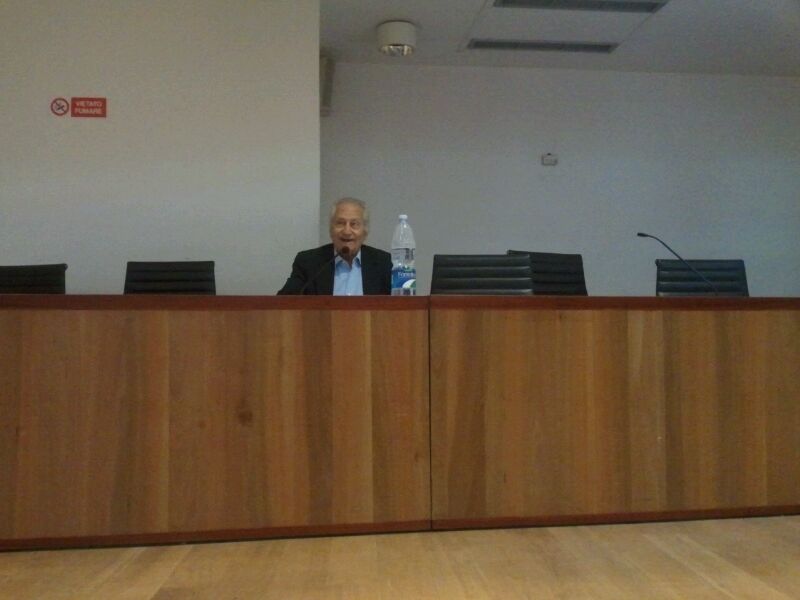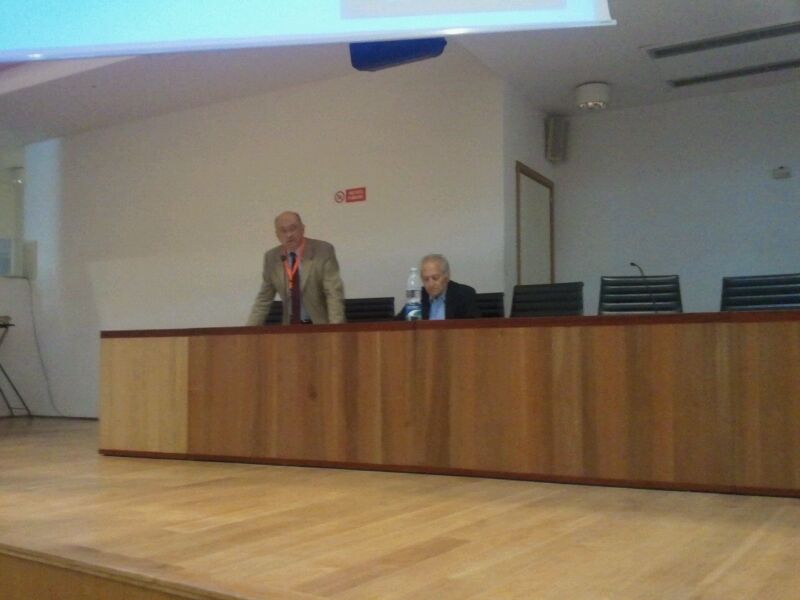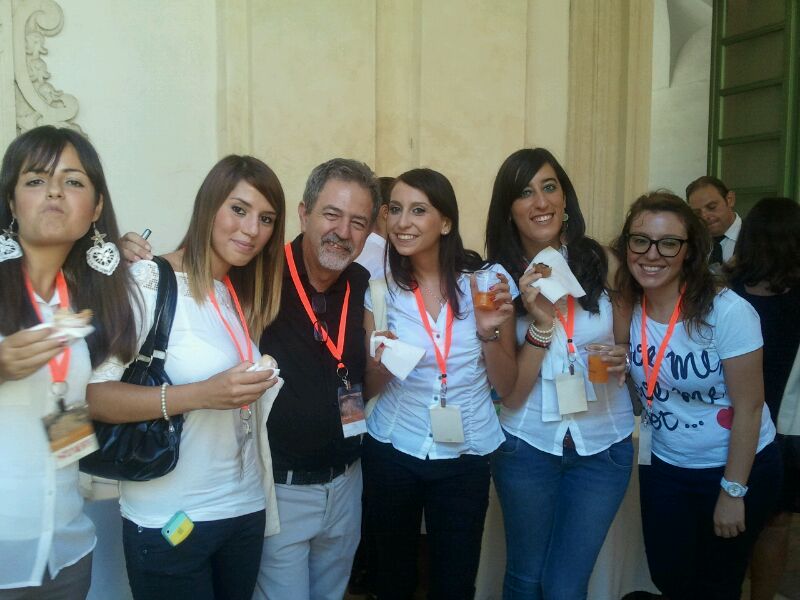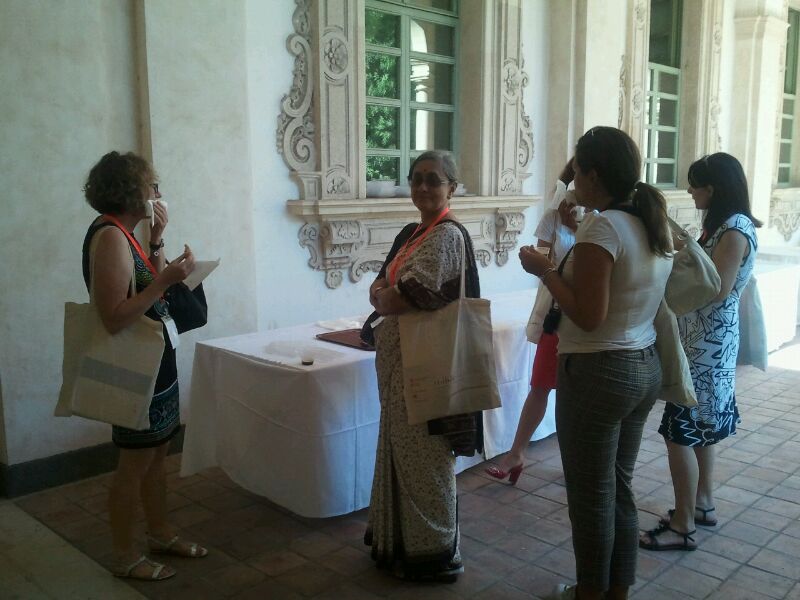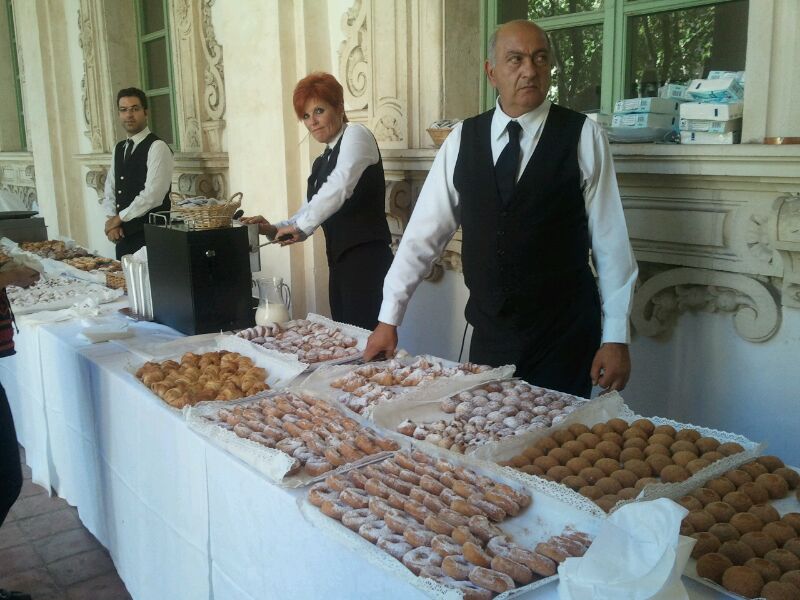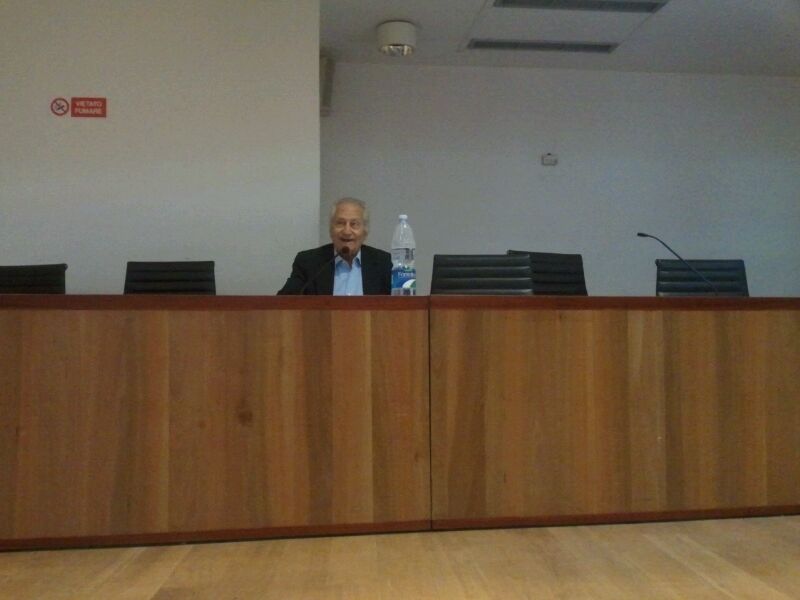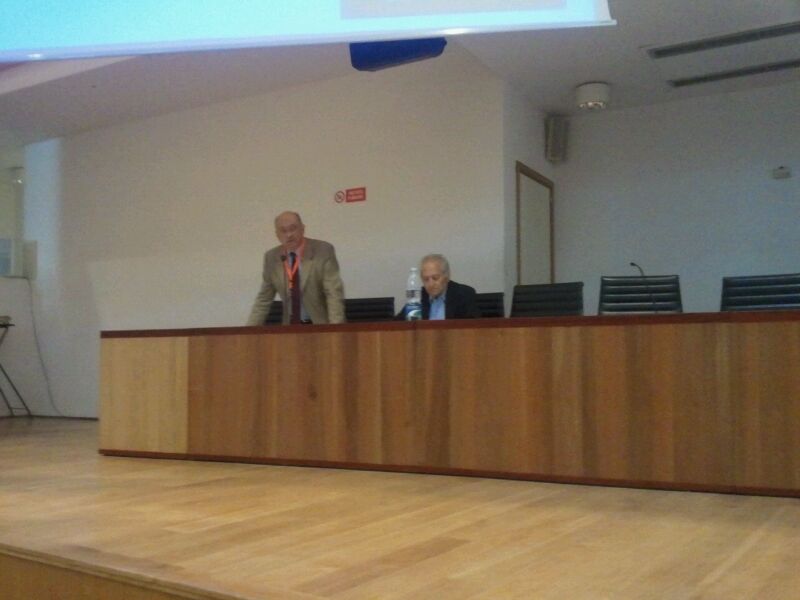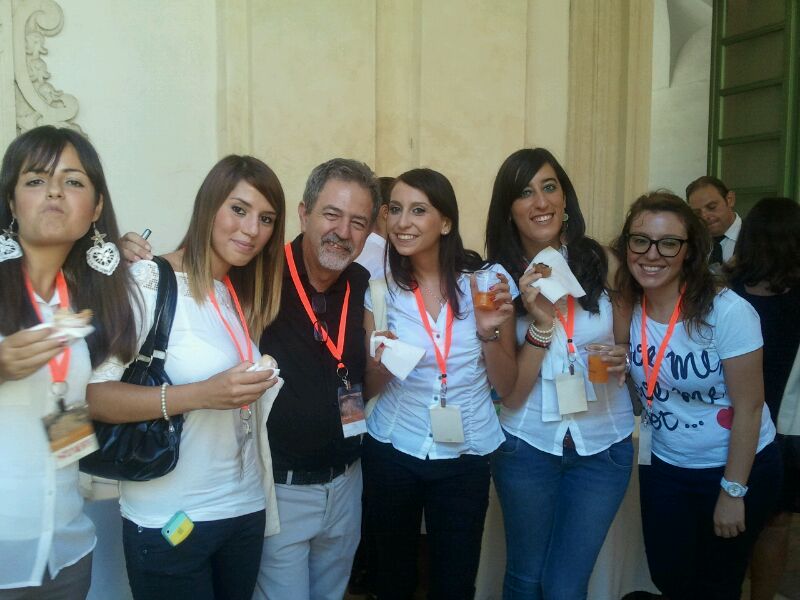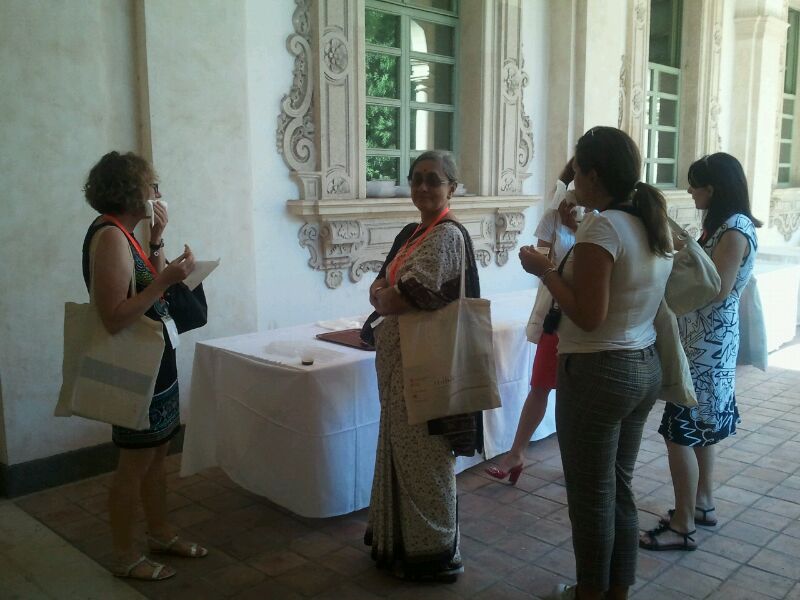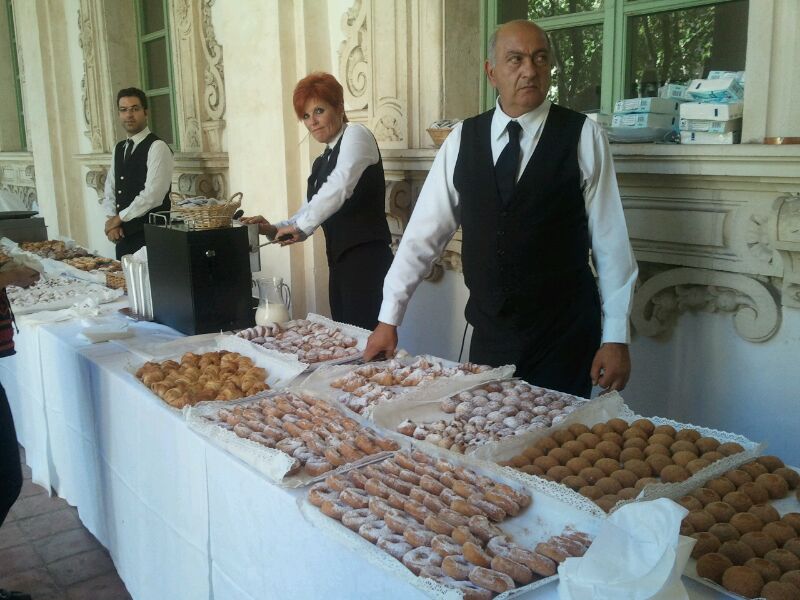Visible and invisible: perceiving the city between descriptions and omissions
12 – 13 – 14 settembre 2013 – VI CONGRESSO AISU
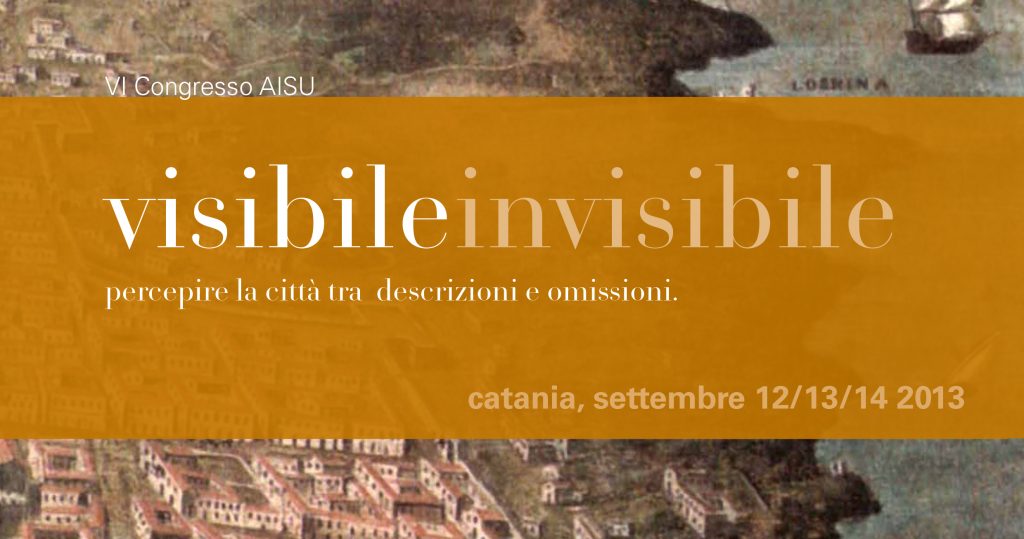
The congress will offer an opportunity to reflect on the complexity and ambiguity of the tools called to describe the city and its history. Through pairs of opposites it is possible to contrast a visible city and an invisible city, an official and an unofficial one, a public and a private one, an objective and a subjective vision, a systematic and an impressionistic one, a false and a true-like one. Finally, it is possible to refer to a reading that is structured by "album" and to another that is based on individual fragments. At the center of attention are the many ways in which the city over the centuries has been described, told, portrayed, quantified with words, numbers and images. Starting from antiquity and the Middle Ages, the techniques of description and representation offer us the opportunity to start a comparison between cities and different contexts, in search of different ways of perceiving the urban structure in all its complexity. This will only be the starting point, with respect to the objective and subjective limits that the analytical process brings: on the one hand there is in fact everything that has been omitted, concealed, ignored over time, especially within the perimeter of a deliberately hidden city ( in private and social life behind the walls of ghettos, prisons, hospitals, tolerance houses, convents, houses). On the other hand, there is a city that is below the surface of physical evidence: the city of excavations, underground infrastructures, under-services, underground or submerged buildings. Besides physical consistency there is also an intangible city made up of networks, networks and other relationships that go beyond the "papers" and official documents. Outside of the descriptions and representations, there is therefore a silent and marginal city which is not mentioned in the documents, nor is it highlighted; a reality, partially submerged, which escapes the findings and which corresponds in part to all that has been hidden over time. In this case, other types of techniques and strategies come into play, related to the omission of information, mystification and propaganda. Finally, there are different realities to be brought to light: the multiple residual presences in the city, the conditions of degradation, of suffering, but also the industrious situations, not recorded but no less real.
Call Macrosessions
Call Sessions
Sessions' programme
I. Identità urbane: narrazioni, retoriche, rappresentazioni
- Annastella Carrino Per una tipologia delle scritture urbane nella Puglia di prima età moderna
- Giuseppe Giugno Caltanissetta tra Sei e Settecento: i volti della città tra descrizione dello spazio urbano e nuove identità sociali
- Simona Laudani La città de-scritta: Palermo e le narrazioni dei suoi riti
- Elisabetta Todisco Il vicus e la città: forme di autorappresentazione vicana e sistemazione normativa nella documentazione di età romana
- Clara Copeta, Carla Tedesco Profili di città e nuovi strumenti delle politiche urbane
- Marina Marengo Saint-Malo “ville de plume”: narrazioni asimmetriche fra realtà e finzione
- Ida Porfido Un livre blanc di Vasset, ovvero quello che le carte non dicono
- Ömer Faruk Günenç Reading a City through Historical Documents: Dichotomy between Textuality and Visuality
- Aleksandra A. Uzunova L’articolazione dello spazio pubblico nella città post-socialista. I quartieri residenziali di periferia a Sofia tra progetti di riqualificazione e trasformazione bottom-up
- Anna Pellegrino Il cuore nero di Firenze. San Frediano, un quartiere popolare ai margini della legalità tra Otto e Novecento
- Bassma Reda Abou El Fadl The Discursive Moments of Movement of Ramses II Colossal to Ramses Square: new identity, new political manifestation and new symbolic meanings
- Gemma Belli La modernizzazione delle città italiane: miti e stereotipi su «Il Mondo» di Pannunzio
- Liliana Iuga The old city and the rhetoric of urban modernization in Romania (1950s-1970s)
- Solange Rossi «Le cose nuove e belle di cui Genova si è arricchita». Genova Nuova, 1902: metamorfosi della “Superba” a cavallo fra Otto e Novecento
- Deborah Sorrenti Il simbolo dell’arco di trionfo tra Francia e Italia
- Costanza Calabretta Memoria e identità. Fra Palast der Republik e Schloss (Berlino 1990-2008)
- Roberto Parisini Governo dei consumi e dell’identità urbana a Bologna negli anni del boom
- Fabrizio Pedone Le parole dell’identità nella pianificazione e nel governo delle trasfor- mazioni urbane, il caso di Palermo
- Christos Bakalis Mapping cities through memories. Some methodological issues
- Carolina De Falco Città “negate”: gli ospedali psichiatrici di don Uva come testimonianza di un impegno
- Stefania Pollone L’Immacolatella nel Porto di Napoli: dall’abbandono alla riaffermazione di un’identità “migrante”
- Thomas Renard Dante e i “luoghi della memoria” nell’Italia unita: stratificazione di progetti e interventi nelle zone dantesche di Firenze e Ravenna
- Lucía Solano Figuerido Propaganda e patrimonio urbano a Madrid nel Primo Franchismo
- Felipe A. Lanuza Rilling The presence of the absent: erasure and memory in the site of the Heygate Estate (1969-1974, Southwark, South London)
- Martina Matozzi Da J.M. de Macedo a R. Fonseca. Le rappresentazioni letterarie di Rio de Janeiro e la presenza portoghese. Città portoghese, città brasiliana o città informale?
- Valeria Rainoldi Le tracce della memoria: il ghetto ebraico, la sinagoga e i cimiteri ebraici a Verona fra Ottocento e Novecento
- Radhika Seshan Constructing Minorities: Historical Perspectives with reference to Surat and Madras in the 17th century
II. Visibilità dell’antico: patrimonio e istituzioni culturali
- Maria Teresa Como Il contesto urbano invisibile della Cappella Pontano
- Teresa Colletta L’archeologia urbana degli anni Duemila. I diversi interventi di conservazione e recupero delle strutture antiche di Napoli greco-romana, medievale e rinascimentale nel centro storico patrimonio del mondo
- Beatrice Maria Fracchia La descrizione della città attraverso le relazioni dell’ingegnere Pietro Spurgazzi. Il dibattito sulla collocazione degli scali ferroviari a Torino negli anni post unitari
- Roberta Varriale Dalla storia urbana al futuro: un progetto per il Rione Sanità a Napoli
- Cristina Pallini Il ruolo della Commissione d’Ornato nella ricostruzione di Alessandria d’Egitto
- Tiziana Casaburi Archeologia e reti metropolitane. L’esperienza di Roma, l’intuizione di Atene, l’esempio di Napoli
- Flavia Zelli Scavo ipogeo e stratificazioni contemporanee: l’archeologia come stru mento di riqualificazione urbana. Esempi recenti
- Flavia Campos Cerullo, Vanine Borges Amaral Unveiling the heritage in Brazil: a practical preservationist discourse
- Ana Paula Farah Il rapporto tra antico e nuovo nel territorio brasiliano: l’operare dell’architetto nell’ambiente costruito preesistente
- Andrea Pane, Renata Campello Cabral Le parole della tutela: «prospettiva», «luce» e «ambiente» nel dibattito culturale e normativo per la salvaguardia a scala urbana in Italia, 1902-1939
- Antonella Versaci, Alessio Cardaci Patrimonio urbano e centri storici in Francia: il caso di Lione
- Mariarosaria Villani Il disvelamento dell’antico. “Isolamenti” e “Liberazioni” archeologiche nella Roma di fine anni Trenta. Il ruolo di B.M. Apollonj Ghetti
- Cristina Bobillo Garcia How the awareness about the urban heritage evolved in Barcelona: The Corresponsalías de Barrio (Neighborhood Correspondents) of the City History Museum, 1960-1978
- Cristina Borgioli Spazio pubblico e beni comuni a Sassari. La percezione del “patrimonio culturale” negli Statuti cittadini
Alessandro Castagnaro Il Rione Terra a Pozzuoli: dalla storia alla rinascita. Contraddizioni progettuali e scoperte di archeologia urbana - Giovanna Ceniccola Benevento francese: cultura del restauro e trasformazione della città (1806-1815)
- Manoela Rossinetti Rufinoni Descrizioni e omissioni nella preservazione del patrimonio urbano industriale: un caso studio a São Paulo/Brasile
- Luigi Veronese La tutela dei quartieri di edilizia popolare del primo Novecento: il caso di Napoli
- Maria Angélica da Silva, Ana Cláudia Vasconcelos Magalhães, Érica Aprígio Albuquerque, Taciana Santiago de Melo, Louise Maria Martins Cerqueira The Museum of Franciscanism and the city in Northeast Brazil
- Emília Ferreira Lisbon on stage: setting up a policy of seduction. Making way for the National Fine Arts Museum
- Davide Indelicato, Antonella Versaci, Alessio Cardaci Ecomusei e virtualità. Proposte per la conoscenza, la comprensione e la comunicazione del paesaggio industriale dismesso. Il sito minerario di Floristella-Grottacalda
- Maria Helena Souto, Ana Cardoso de Matos From the extinguished Industrial Museum in Lisbon to a proposal of a Virtual Portuguese Design Museum
- Kali Tzortzi Recreation or transformation of the urban context? The case of the new Acropolis Museum
- Domenico Ciccarello Ex pluribus unum, ex uno plura. Aggregazioni e dispersioni del patrimonio librario-archivistico nelle città italiane con la soppressione degli ordini religiosi dopo l’Unità
- Simona Inserra Dalle librerie monastiche alle biblioteche civiche. Il caso esemplare della biblioteca benedettina catanese tra aggregazione di fondi e dispersione di beni, memoria e identità
- Marcello Proietto Cultura e identità territoriale. Il canonico Vincenzo Raciti Romeo e la Biblioteca Zelantea di Acireale
- Michela Costantini, Giusi Andreina Perniola La dimensione musicale nella Torino napoleonica (1798-1814)
- Maria Rosa De Luca History of Music and Urban History: a possible union
- Laurence Bassières La Commission du Vieux Paris e l’invenzione del patrimonio urbano
- Melania Nucifora Sul concetto di paesaggio urbano storico: una riflessione intorno al caso di Siracusa
III. Città d’inchiostro
- Isabella Balestreri Milano e il suo territorio. La «valanga» delle Guide ottocentesche
- Massimo Galtarossa “Impressioni di viaggio” nelle narrazioni degli studenti. (Padova, XVI-XVII)
- Adriana Piccinini Higashino Kyoto by Christian eyes: Luis Frois tales of Japanese urban life and descriptions of 16th century Kyoto city
- Monica Visioli Immagini di città nelle “lettere itinerarie” del conte cremonese Giam- battista Biffi (1773-1777): osservazioni preliminari
- Gabriella Bologna Frederic Leighton nelle città venete: diari, lettere, disegni e dipinti
- Ela Çil, Ayşe Nur Şenel Collage of a changing city: nineteenth century Istanbul through the narratives of its administrators, travelers, and writers
- Rosa Maria Delli Quadri L’editoria di viaggio nella Napoli dell’Ottocento
- Ewa Kawamura L’inedito journal del viaggio in Italia negli anni 1838-1839 di Clara de Constant Rebecque
- Laura Sabrina Pelissetti La restituzione di Roma medievale nella letteratura e nelle fonti iconografiche. La persistenza del modello dei Mirabilia Urbis Romae tra immaginario e realtà
- Federica Scibilia Le città costiere di Sicilia e le loro architetture nella “memoria” di viaggio di Giovan Battista Pacichelli (1685)
- Alfredo Buccaro “Impressioni” di città nella storia del viaggio in Italia e dall’Italia
- Salvatore Di Liello Torino, il ritratto di una capitale nel Grand Tour di Joseph-Jérôme de Lalande
- Daniela Stroffolino Vedute di città italiane à vol d’oiseau nella produzione litografica francese dell’Ottocento
- Silvia Gaiga L’Italia e il Regno di Napoli nei testi dell’atlante di Abramo Ortelio
- Silvia Capotosto Romani e villani. Aspetti linguistici dell’interazione tra città e contado nella letteratura dialettale
- Marina Castiglione, Michele Burgio Auto ed eterorappresentazioni antroponimiche dei contesti urbani: alcuni casi in Sicilia
- Marina Castiglione, Marianna Trovato Ricostruire una città, reinventare un’odonomastica
- Milena Romano Leggere Catania nei giornali locali tra Otto e Novecento
- Rossella Sammartano Le vie dei mestieri a Palermo tra passato e presente
- Rosaria Sardo La città plurilingue. Assetti urbani e tradizioni discorsive nel Viceregno Spagnolo
- Pietro Trifone Varietà linguistiche nella Roma del Cinquecento. Il caso del processo per «stregarie» a Caterina siciliana
- Beatrice Saletti Ferrara nelle cronache rinascimentali: spazi urbani e paradigmi del potere estense
- Simonetta Ciranna Londra e Parigi two cities of old world nelle pagine di «The Architectural Review and American Builders’ Journal» (Philadelphia 1868-1870)
- Francesca Capano Le Neapolis di Friedrich Bernhard Werner
IV. Economie urbane
- Riccardo Cella, Maria Luisa Ferrari L’immagine finalizzata. Verona agricola vs Verona industriale tra la fine dell’Ottocento e gli inizi del Novecento
- Maddalena Chimisso Termoli città industriale? Il Centro di studi e piani economici di Roma e le prospettive economiche della regione molisana nel secondo Novecento
- Alberto Guenzi Fonti e forme di rappresentazione del processo di industrializzazione. Bologna dagli anni Trenta al miracolo economico
- Guido Montanari Torino da “One Company Town” a “città degli eventi”
- Maria Gabriella Rienzo Lo spazio urbano-industriale in Italia: percezioni e descrizioni
- Fabio Salerno Autorappresentazione di Priolo. Da borgo agricolo a città industriale
- Ilaria Suffia Una realtà ad alta concentrazione industriale: Sesto San Giovanni nel corso del Novecento
- Sara De Maestri, Sonia Dellacasa, Alberto Manzini Villaggi e abitazioni operaie nella Liguria industriale: dallo spazio pensato a quello percepito
- Luciana Caminiti Le città-porto. Identità urbane e portuali tra età moderna e contemporanea
- Daniele Andreozzi La Filadelfia d’Europa e il suo porto. Crescita, poteri e miti a Trieste
- Rosario Battaglia Città-porto e sviluppo economico. Il caso di Marsiglia, Genova e Trieste nel rapporto “privilegiato” con gli Stati Uniti nella prima metà dell’Ottocento
- Salvatore Bottari Le città portuali siciliane nel Settecento. Alcune considerazioni su commercio, attori sociali e pratiche dello spazio urbano
- Luigi Chiara Città-porto e sviluppo economico in Sicilia: il caso di Messina
- Michela D’Angelo Livorno 1421-1606: da villaggio a città-porto mediterranea
- Christos Desyllas «Una popolazione piena di bisogni» and the Monte di Pietà of «Porto Franco»
- Mirella Mafrici Porti franchi e compagnie di commercio meridionali nelle riflessioni degli economisti napoletani del Settecento
- Carmelo G. Severino Crotone città-porto
- Francesca Bonfante Lione e le “città bianche”
- Spiros Dimanopoulos “Remarkable monuments” and the development of tourism in the prefecture of Heraklion, 1950-1965
- Josep-Maria García-Fuentes The construction of Barcelona’s “Barri Gòtic”: identity, tourism and the authenticity of a fake
- Mar Loren, Ana B. Quesada Re-imagining the Mediterranean city of Málaga. From the ephemeral industrial dream to the construction of a touristic territory
- Pisana Posocco L’uso dei modelli utopici nella pianificazione degli insediamenti turistici
- Carmen Rodríguez Pedret La città moderna: istruzioni per l’uso. La creazione di Barcellona nelle guide turistiche (1839-1912)
- Sabrina Cipriani La dematerializzazione della destinazione turistica: tra racconto, esperienza e ricordo
V. Abitare, amministrare e misurare la città
- Elisabetta Capelli A partire dal social housing. Contraddizioni e prospettive per una nuova cultura della casa (e per un ruolo della storia nelle politiche abitative)
- Roberto Sammito Abitare in grotta nel Novecento. Il caso Chiafura
- Irina Seits Soviet Homes in Post-Soviet Reality: Moving from Leningrad to St. Petersburg
- Rita D’Attorre I piani per quartieri residenziali presso una grande industria. Il villaggio Fiat a Settimo Torinese
- Anna Paola Di Risio, Emanuele Tuccio La fabbrica e la residenza: progetto globale e pratiche d’uso nella città mediterranea. Il quartiere Macchitella a Gela
- Chiara Ingrosso “Le case degli Americani” per i senzatetto napoletani
- Lorenzo Mingardi Il Villaggio Pilastro a Bologna, tra modello teorico e costruzione di una comunità
- Irene Ranaldi Dagli alveari umani ai loft: mutamenti di identità e di uso nelle case dell’Istituto Case Popolari del rione Testaccio a Roma
- Anna De Pascale Popolazione e abitazioni
- Isabella Frescura L’espansione urbana a Catania tra Otto e Novecento: piani regolatori e speculazioni edilizie nella “Milano del Sud”
- Gianluigi Salvucci Immobili “instabili” nella ricostruzione della capitale
- Riccardo Cella Casa e bottega. Alcune note su affitto e subaffitto a Venezia a metà del Settecento
- Preston Perluss Pyramidal Tenancy and Landlord Hierarchies: a micro cosmos of tenants and subtenants in a Parisian neighborhood
- Roberto Bruno Alle origini del welfare locale. Catania nell’Inchiesta Bonfadini, tra realtà e rappresentazione
- Domenica La Banca Città in trasformazione. I centri sociali nelle nuove periferie urbane (1954-1971)
- Nicoletta Calapà, Blythe Alice Raviola «Cattolizzate» e forestieri: il sistema dotale a Torino fra Sei e Settecento. Alcuni spunti di riflessione
- Salvatore Santuccio Dalle valli alle intendenze, la rivoluzione amministrativa in Sicilia nella prima metà del XIX secolo
- Giovanni Cristina Infrastructural geopolitics interviewed. Strategies, analyses and perspectives in the Sicilian system through the Inchiesta Parlamentare sulla Marina mercantile (1881-1882)
- Methiye Gül Çöteli Redefining the Anatolian Urban Network of 19th Century: City Networking of Urban Commercial Districts
- Eloisa Betti Politica e statistica a Bologna nel secondo dopoguerra: due generazioni di statistici in Consiglio comunale. Prime ipotesi di ricerca
- Daniele Dieci La misurazione dei Quartiers sensibles: breve storia di una categoria pubblica
- Gianluca Belli L’immagine della città nei censimenti. Il caso della Firenze cinquecentesca
- Dario Dell’Osa Evoluzione dell’assetto patrimoniale di un’azienda mercantile ragusea nella seconda metà del XVI secolo
- Elena Doria La misura della città nel primo Ottocento: i casi di Venezia e Milano. Fonti e strumenti per una lettura comparata della città
- Elina Gugliuzzo The Military Presence in Istanbul in the Early Modern Age
- Giancarlo Marchesi La «Descrizione generale della popolazione della città e provincia di Brescia» del 1764
- Paola Nestola «An testis sciat in qua provincia sita sit civitas?». Città a giudizio: fonti processuali per un approccio multifocale di Storia Urbana
- Vilém Zábranský Rolls of Freemen – a quality of quantity. Research issue of urban migration and archival sources on example of Prague in pre-statistical period
- Idamaria Fusco Il “visibile” e l’“invisibile” in una importante fonte fiscale meridionale. Le numerazioni dei fuochi seicentesche e la rappresentazione demografica delle realtà urbane
VI. Città immaginate: sguardi sulla città contemporanea
- Camilo Fernandez Cortizo On the streets and squares of the city: popular missions and penitential processions in Galicia (Spain). 17th-18th centuries
- Roberto J. López Tra realtà e utopia. L’immagine della città nella letteratura agiografica spagnola dell’epoca moderna
- Fernando Suárez Golán Giubileo universale e reale patrocinio. Il culto di san Giacomo il Maggiore nella Compostela dei secoli XVII e XVIII: tra desiderio e realtà
- Emma Luisa Cahill Marrón The Transformation of London for the Legitimisation of the Tudor Dynasty: Catherine of Aragon and Arthur Tudor’s Wedding in 1501
- Andrea Luccaroni Afasia della memoria. L’Ex Campo di Concentramento di Fossoli
- Bruno Mussari Entrate trionfali e apparati effimeri a Siena in età moderna. La rappre- sentazione della città e l’immagine rivisitata dei suoi luoghi simbolo
- Fernando Villaseñor Sebastián Triumphal Scenography and Transformation of the Pontifical Rome Stemming from the Christian Triumphs in the Granada War (1482-1492)
- Rosa Maria Giusto La città nei concorsi dell’Accademia di San Luca nel Settecento
- Matteo Iannello Palermo immaginata: progetti e proposte di una città possibile
- Ettore Sessa Iperbolica, multiforme e contraddittoria: la metafora della “metropoli globale” attraverso l’effimero celebrativo delle esposizioni coloniali della tarda “civiltà industriale”
- Stefano Guidarini Progettare la città dei non vedenti, un esempio concreto e alcune riflessioni sull’architettura
- Maria Romeiras Amado The allowed cities: spaces and performances of blind citizens in the pre and post-earthquake Lisbon (1755)
- Ornella Cirillo L’ascesa in collina: nuovi sguardi sulla Napoli alta tra fine Ottocento e primo Novecento
- Giuseppe Damone I mezzi di trasporto e le ghost town: una nuova percezione del costruito
- Rosario del Caz Enjuto The dehumanization of the city: the car and the invasion of public space
- Panayotis Pangalos, Vassiliki Petridou Trasformazioni infrastrutturali e viste di Patrasso nella sua storia
- Annarita Teodosio Volando sulla città: prospettive inedite e rinnovate percezioni dello spazio urbano
- Paolo Cornaglia Czernowitz. “Un ermellino a Cernopol” tra Impero, Romania e Ucraina
- Yan Wang, Da-Ping Liu Harbin: an Ideally Designed City by Russia
- Zhuang Wei, Liu Jike Harbin: Between Nationalism and Imperialism, c. 1898-1940
- Saverio Carillo Pompei, la città del turismo religioso
- Danila Jacazzi «Eletorri, elecase, eiteatri, eitemplisi poteanoquasi integridiscernere». Storia del paesaggio perduto della Valle di Pompei
- Lydia Sapounaki-Dracaki, Maria-Luisa Tzoya Moatsou, Olga Moatsou Atene Through the Looking-Glass
- Riccardo Serraglio Il mito di Hygeia nei progetti di riforma urbana nell’Italia meridionale dopo l’Unità nazionale
- Ivano Mistretta Lo sguardo in ascolto. Tarr, Akerman e Sokurov tra rilievo degli spazi e rivelazione del vissuto
- Alessandra Acocella “Abitare la città”: il ruolo della fotografia nella ricerca di Ugo La Pietra, 1969-1979
- Carmen Díez Medina, Ricardo S. Lampreave Bruno Morassutti: un’esperienza raccontata con immagini
- Daniele Vazquez Pizzi Pratiche d’esplorazione degli spazi compatti e degli spazi dispersi
- Dragan Damjanović Photo Albums of the 1880 Zagreb Earthquake
- Tanja Scheffler “Old Dresden”: an entirely Baroque city? How Dresden is presented in picture books from the early years of the G.D.R.
- Annie Schentag The Picture Book of Earlier Buffalo: Envisioning Ruins during Renewal
- Harald R. Stühlinger The visual revival of Old Vienna. The photographs of the city wall of Vienna in 1858
- William M. Taylor Assembling disaster and the urban imagination: collections of rubble photography and the Messina (1908) earthquake
- Catherine De Lorenzo 1920s Sydney: Public concerns, private obsessions
- Philip Goldswain Au Gaz: French Photographic Albums in the State Library of Victoria
- Douglas Klahr The Stereoscopic Photo Album as Nazi Propaganda: Ephemerality of Image in Vienna, The Pearl of the Reich
- Serena Bisogno, Federica Comes Prima di Gomorra: il paesaggio urbano napoletano tra gli albori del XX secolo e il secondo dopoguerra raccontato attraverso il cinema. Realtà, stereotipo e identità culturale
- Scott Budzynski The Cinematic High-Rise: Perspectives on Milan
- Claudia Lamberti Berlino anni Venti: fascino e timori di una grande città
- Andrea Maglio Cinema, storia e identità urbana: il caso di Napoli
- Antonello Scopacasa Il luogo invisibile. Berlino nella fotografia del dopoguerra
VII. Ritratti di città: città restituite e città interpretate
- Francesca Anichini, Gabriele Gattiglia Prevedere il passato. Strumenti predittivi per gestire il patrimonio sepolto all’interno della città contemporanea
- Enza Emanuela Esposito, Marilena Di Prima Indirizzi di tutela e conservazione dei «borghi rurali» di Sicilia come rete sul territorio attraverso lo strumento GIS
- Massimiliano Grava Fonti cartografiche di Toscana e Catalogna di età Moderna e Contem- poranea. Ricostruire con il GIS, comunicare con WebGIS
- Ludovica Galeazzo, Marco Pedron Visualizing Venice. Mappare e modellare la storia urbana: il caso dell’insula dell’Accademia
- Bernadette Devilat Loustalot 3D laser scanning for recording heritage areas in post-earthquake re-construction. The cases of Lolol and Zúñiga in Chile
- Silvia Di Salvatore Ricerca storica urbana e restituzione cartografica come strumenti di interpretazione della città contemporanea: il caso studio della città di Alcobaça (Portogallo)
- Tullio Aebischer Archeologia geodetica lungo l’Appia Antica (Roma)
- Raffaella Brigante, Fabio Radicioni Georeferenziazione di cartografie storiche e loro utilizzo per la creazione di GIS in aree a rischio sismico
- Mathieu Fernandez The ground of Paris and scientists during the 19th century. Apparition of an atlas of the underground. Application using GIS software
- João Paulo da Costa Amado Urban sanitation in Lisbon during the 19th century
- Maria Ines Pascariello, Maria Rosaria Trincone Le tracce dell’acqua: linee, reti, punti
- Eva J. Rodríguez Romero, Benito Jiménez Alcalá Water visibility, convents, monasteries and Madrid urban development
- Adriano Russo, Emanuele Forzese Tecnologie urbane dell’acqua tra visibilità e vivibilità. Valutazioni ambientali e valore architettonico delle infrastrutture idriche nella città
- Francesco Ruvolo La Città dei Militari. Dalla difesa alla salvaguardia del territorio in una piazzaforte siciliana del Settecento. Milazzo tra assedi e alluvioni nella cartografia dell’epoca
- Teresa Colletta La cartografia urbana pre-catastale. Strumenti per il governo della città del XVII e XVIII secolo
- Daniela Barbieri, Isidoro Parodi Terra di Nove. Il Libro figurato di Giovanni Benedetto Zandrino, istantanea di un territorio tra Piemonte e Liguria sul finire del Seicento
- Cristina Cuneo, Annalisa Dameri Controllo e misura. Strumenti per il governo della città di Torino nel XVIII secolo: i “Capitani di Quartiere”
- Arturo Gallia La Pianta dell’Isola di Ponza di Agostino Grasso. Indagini e prodotti cartografici come strumento di conoscenza del territorio e di lettura delle dinamiche insediative (XVIII secolo)
- Cristina Iterar La Platea settecentesca della “SS. Annunciata della Terra di Castello A mare del Volturno”: un documento inedito per lo studio della storia urbana di Castel Volturno in Campania
- Francesca Valensise Stati feudali e raffigurazioni urbane in un cabreo del XVIII secolo
- Ana Cláudia Vasconcellos Magalhães, Érica Aprígio Albuquerque The urban dynamics of churchyards and churches: sacred spaces of the
former colonial village of Marechal Deodoro, Alagoas, Brazil - Silvia Beltramo La città dei frati: gli spazi della predicazione nelle iconografie tardo medievali
- Ana María Jiménez Jiménez Architettura nella città occulta. Córdoba conventuale, una approssi- mazione del patrimonio urbano
- Andrea Longhi Paesaggi del sacro e costruzione dello Stato sabaudo: poli della religiosità urbani e territoriali nel Theatrum Sabaudiae (1682)
- Taciana Santiago de Melo Confronting images and reality: the presence of religion in the urban landscape of Igarassu, the oldest town in Northeast Brazil
- Elien Vernackt, Bram Vannieuwenhuyze MAGIS Brugge: a sixteenth-century bird’s-eye view on Bruges as starting point for a dynamic database
Giuseppe Antista Realtà e retorica nei “ritratti” delle città siciliane di nuova fondazione: Niscemi e Palma di Montechiaro - Maria Angélica da Silva, Érica Aprígio Albuquerque, Taciana Santiago de Melo The village as a fragment: Brazilian urban landscapes through Dutch images in the 17th century
- Serena Bisogno Strategia dell’effimero barocco-rococò a Napoli. L’attività di Nicolò Tagliacozzi Canale
- Sabina Montana Palermo 1701-1720: la città nelle rappresentazioni del Senato di Palermo
Scientific Committee
- prof. Salvatore Adorno
- prof. Donatella Calabi
- prof. Aldo Castellano
- prof. Augusto Ciuffetti
- prof. Giovanni Luigi Fontana
- prof. Enrico Iachello
- prof. Paola Lanaro
- prof. Paolo Militello
- prof. Francesca Martorano
- prof. Luca Mocarelli
- prof. Roberta Morelli
- prof. Massimiliano Savorra
- prof. Donatella Strangio
- prof. Rosa Tamborrino
- prof. Carlo Travaglini
- prof. Guido Zucconi
Coordinator organizer
Direction
prof. Salvatore Adorno
Organizers
dott. Giovanni Cristina
dott. ssa Lavinia Gazzè
dott. Francesco Mannino
prof. Paolo Militello
dott. ssa Melania Nucifora
dott. ssa Arianna Rotondo
dott. Giannantonio Scaglione
Photo album
